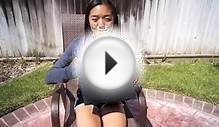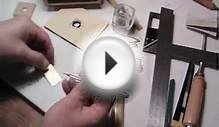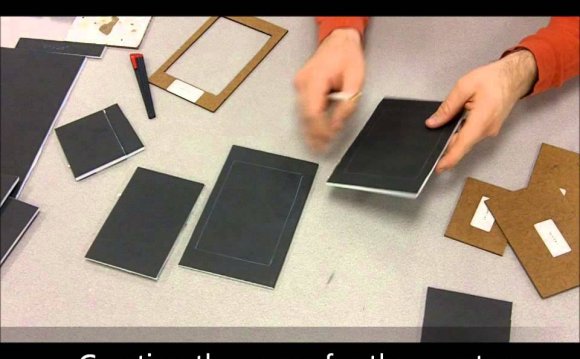
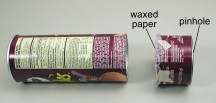 The first type of camera ever invented was called a camera obscura, which is Latin for 'dark room.' At first, that's exactly what it was - a dark room with a tiny hole that allowed a narrow beam of light to enter. This beam produced a 'real image' of outside objects on the wall opposite the hole (it didn't take pictures, though - light-sensitive materials like film weren't invented until much later). A pinhole camera is just a portable version of this ancient camera obscura. (It's a bit inconvenient to carry a room with you to take pictures of your family vacation!)
The first type of camera ever invented was called a camera obscura, which is Latin for 'dark room.' At first, that's exactly what it was - a dark room with a tiny hole that allowed a narrow beam of light to enter. This beam produced a 'real image' of outside objects on the wall opposite the hole (it didn't take pictures, though - light-sensitive materials like film weren't invented until much later). A pinhole camera is just a portable version of this ancient camera obscura. (It's a bit inconvenient to carry a room with you to take pictures of your family vacation!)
In a modern camera, a lens is used to bend light waves into a narrow beam that produces an image on the film. In a pinhole camera, the hole acts like a lens by only allowing a narrow beam of light to enter. It forms the same type of upside-down, reversed image as a regular camera, so you can see how a camera works by making a pinhole viewer. (Read more about how cameras work here.)
With photographic paper and the right developing materials, you can make a pinhole camera that will actually produce photographs. In this project, though, you'll make a pinhole camera viewer that allows you to see a real image, but not record it. An adult will need to help with the cutting.
What You Need:
- A cylindrical chip can with a metal bottom (like the kind Pringles come in). This works best, but you can also use an empty paper towel roll.
- Aluminum foil
- Waxed paper
- 1 sheet black construction paper
- Tape (masking or electrical)
- Straight pin
- Ruler
- Marker
- Xacto knife, utility knife, or box cutter
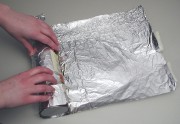 What You Do:
What You Do:
1. Use a ruler to measure two inches up from the bottom of the chip can, and mark the spot. Do this several more times around the can, then connect the marks so you have a line going all the way around. Cut the can in two pieces along this line.
2. Make a hole in the center of the metal bottom of the can. This step requires some patience, because you want it to be a tiny, smooth hole. You can tap the top of the pin with a heavy object, but then turn it as you push it through the metal so that your edges will be smooth. (If you are using a paper towel tube instead of a chip can, place a piece of aluminum foil between two index cards and gently turn the pin through the layers. Then tape the aluminum foil to the end of the tube, with the hole in the center.)
3. Cut a circle out of waxed paper and tape it over the top of the short part of the can. This will be your viewing screen, or 'film.'
4. Put the long part of the can back on top of the short part and tape the two pieces together so they form one tube again.
5. For a pinhole camera to work, the only light must come in through the pinhole. Make your camera 'light-tight' by wrapping it in aluminum foil. Take a 1.5-foot-long piece of foil and tape the edge to the can (have the foil line up even with the metal bottom of the can). Then wrap the foil around the can as many times as it will go, closing the end with tape. Some foil will probably extend over the open end of the can; just tuck this excess inside the tube.
6. Roll the piece of black construction paper into a tube and insert it part-way into the open end of the can. This will act as a light-shielding eyepiece for your camera.
YOU MIGHT ALSO LIKE
